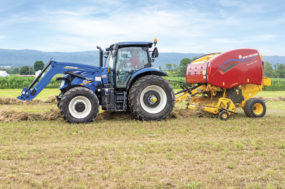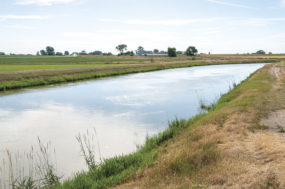While you are at it, modify the other end, too. Make it so the fecal matter comes out as a fine spray. That way there would be no cow pies for the baler to pick up in the hay and make the export hay buyers curse you.
Maybe that would not work. How many people would eat the meat of an animal that eats gophers? Instead, cross an alpaca with an anteater.
Flip the switches in the DNA so the new beast is an omnivore. With the oversized anteater tongue that would still go down a gopher’s tunnel and pull it out for a snack.
Extra protein should not affect the quality of the alpaca fur. It would still eat hay in addition to gophers, so as to not remove a market for the hay grower.
In the area I grew up, the local irrigation district would pay a bounty of 50 cents each for gopher tails. My younger brothers complained of catching some gophers that did not have a tail.
They later found out that some of the neighbor kids would catch a gopher, cut off its tail for the bounty, then turn the gopher loose so it could go grow another tail.
In real life, years back they developed a strain of alfalfa that was aphid-resistant. To make the plant aphid-resistant, they increased the fiber in the stem of the plant.
The aphids did not like that. Neither did the cows. One current genetically modified alfalfa test trial is to add tannins to the forage of an alfalfa plant.
Tannins are found in the seed. Tannins in the leaves and stems of the alfalfa plant produce forage that will not cause bloat in cattle. You could turn the herd out to graze in a pasture with lots of alfalfa and not worry.
One problem – tannins are not palatable to cattle. They don’t like the taste of it. (Maybe that’s why they won’t bloat – they won’t eat the stuff.)
Here’s one for you. Modify a snowflake so it picks up pollutants from the air on its way down and modifies them into hard, strong crystals on the outside edges of the snowflakes.
The result – snow that sands the road as it falls. Then we would need a few coal-fired power plants to produce the needed pollutants.
Things still require a balance. Just like making an owl habitat to have owls around to eat gophers. If the owls ate all the gophers, they would leave due to lack of food. And with the owls gone, new gophers would move in and overrun the place.
To have a thriving population of owls, there would also need to be a thriving population of gophers. If the idea is to rid the alfalfa bales of gopher dirt, then this idea will not work.
As I write this, Washington State is dealing with an ice-and-snow storm that has the main roads and mountain passes from the East (where all the hay and food is grown) to the West closed more than open.
I remember that kind of fun from way back when. Seeing comments on Facebook like “fingers and toes frozen, all chained up and still spun most of the way over Lookout pass, Montana DOT should be real proud of their sloppy work ... ,” also comments of a seven-hour trip that usually takes just over three.
Then there was a comment about the ice and wet snow which toppled trees and pulled down power lines, which was, “Stuck between trees and power lines most of the day.”
I remember getting caught in an ice storm in Portland, Oregon, years back. When it ended, there was about an inch of ice on every exposed surface outside.
We had unloaded our hay before it started and hid out at a truck stop until it ended the next morning. One of the group ventured out to load at a place that made huge castings for rock crushers.
He chained up the driver tires on his truck and had to put a tire chain on one of the steering axle tires to get the truck to kind of move where he aimed it. When he got back he said there was quite a commotion.
The place he went to load had loaded a crusher cone, nine feet wide at the base tapering to about five feet at the top and a foot thick, on a flat-bed trailer coated with ice.
Something slipped and, out of the yard in the street, the cone slid off the trailer onto the road. It took some doing to get it picked up. The local constabulary was so surprised that no other vehicles were hit that all they did was direct traffic while the cone was reloaded.
Back at the truck stop, we heard a sound like a huge collision. A Batesville Casket company truck had been parked broadside to the wind when the ice storm came in.
For whatever reason, the whole one-inch-plus thickness of ice on that side of the trailer decided to let go all at once.
About a third of it ended up on the flatbed trailer parked next to it that the driver had just finished beating the ice loose from and shoveling it off. It took the driver two whole minutes to stutter that he had just been standing where the ice landed.
One story seems to bring to mind another. This was told to me as a true story. An employee of a funeral home was transporting a body in a casket in a hearse.
He picked up a hitch-hiker for company on the long drive. Just after dark, he pulled into the parking lot of a café, told the hitch-hiker that he could not leave the hearse unattended and asked the fellow to step inside and get them each a hamburger and some coffee.
While he was gone, another fellow approached the driver and asked for a ride. “I already have a passenger, but if you don’t mind riding in the jump seat next to a casket, you are welcome to ride.”
The fellow opened the back door and climbed in. When the first passenger returned, they pulled back on the highway, ate the hamburgers and drove into the night.
By and by, the passenger in the back slid open the window between the front and the back, tapped the passenger in the front seat on the shoulder, and asked, “Hey, Buddy, would you have a light?” The front seat passenger opened the door at highway speed and bailed out. FG











